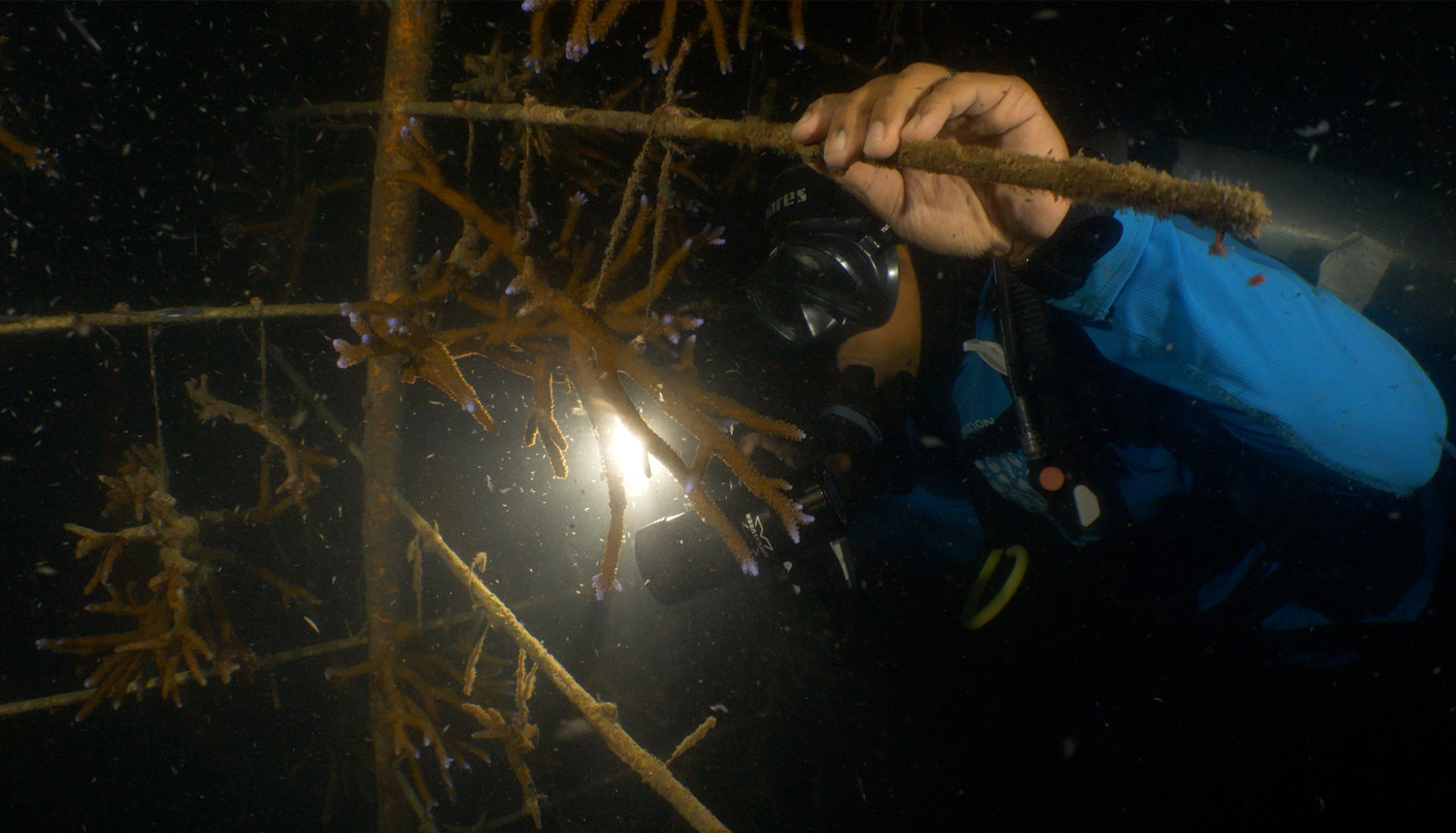Thousands of tiny pink bundles of eggs and sperm have erupted from branching acropora corals planted in Welcome Bay to the delight of the team at the not-for-profit Reef Restoration Foundation.
Reef Restoration Foundation Chief Executive Officer Ryan Donnelly said a coral farming expert and three marine biologists recorded the event at the inshore reef which signalled the start of coral spawning on the Great Barrier Reef with the outer reef expected to reproduce next month after the full moon.
Marine biologist and Master Reef Guide Azri Saparwan, who helped to plant the corals in 2018, emerged from the water with the glow of a proud parent.
The corals were grown on underwater frames after the Great Barrier Reef Marine Park Authority granted a permit for a pilot research offshore nursery at Fitzroy Island in 2017.
“We planted coral cuttings in a degraded patch of reef and these pioneer species have grown to around 1m in diameter helping to create a healthy and complex habitat for various corals and marine life,” Mr Saparwan said.
“Watching our coral babies reproduce for the first time to create the next generation of corals was a beautiful and humbling experience.
“The spawning was a showcase of how the Great Barrier Reef generates new coral recruits each year as part of its regeneration process.”
Cameron Bee who has 25 years’ experience in coral aquaculture, creating coral farms around the Asia-Pacific region and is part of the Great Barrier Reef Legacy’s Living Coral Biobank project to preserve coral diversity, was part of the team hoping to record the coral spawning.
“We are facilitating reef recovery in a time when disturbances are more frequent and severe. Growing corals to create habitat is important but additionally taking them through to spawning is a milestone in our bid to maintain biodiversity,” he said.
Mr Donnelly said Reef Restoration Foundation partnered with the Tropical North Queensland tourism industry and corporate sponsors to create the Fitzroy Island nursery and expand to two outer reef sites on Hastings and Moore Reefs.
“It is a community effort as we receive no government funding and rely on the support of around 50 volunteers, with about one-third of these experienced divers working in the tourism industry,” he said.
“Cuttings at this site were taken from healthy corals and attached to ‘coral tree’ frames suspended underwater using techniques pioneered at reef restoration sites in Florida.
“These cuttings grow faster in the nursery setting allowing us to then plant them onto hard substrate after about six months.
“As these cuttings establish themselves, other coral species also become established and marine life including invertebrates, colourful tropical fish and turtles become part of the habitat.
“Coral spawning is our second goal after achieving a complex habitat as it means the reef is regenerating as nature intended.
“Successful coral spawning will mark a critical threshold for Reef Restoration Foundation which was a start-up organisation building partnerships and supporters from nothing five short years ago.
“The challenge for the Great Barrier Reef is far from over with scientists telling us the water will continue to warm, but we are up for the fight. In a changing climate, it is all about buying time and selling hope.
“We need to drastically reduce global emissions, but at the same time work collaboratively to build the resilience of the places we love. We all have a role to play.”
